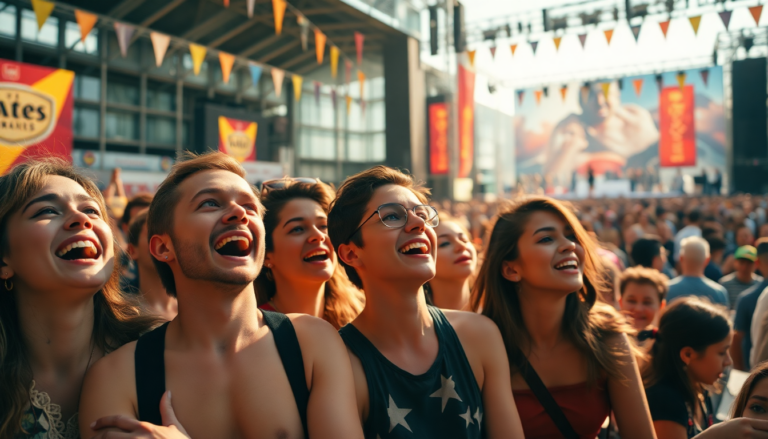Argomenti trattati
- Introduction to Parasocial Relationships
- The Evolution of Celebrity Influence
- Democratization of Celebrity and Fandom
- Understanding the Psychology: What Are Parasocial Relationships?
- The Impact of Social Media on Fandoms
- The Positive Aspects of Fandom
- The Dark Side of Celebrity Infatuation
- Balancing Reality and Celebrity Culture
- Conclusion: Finding Balance in Fandom
In recent weeks, I have found myself examining the intricate web of celebrity culture through various cultural events, including award shows, film premieres, and viral sensations. This exploration is not merely for entertainment; rather, it stems from a deep curiosity about the psychological dynamics at play in the world of celebrity fandom. Growing up, I was fascinated by how iconic figures, like Michael Jackson, had fans fainting at concerts—a phenomenon I have pondered ever since. How does a single individual hold such power over an audience?
The Evolution of Celebrity Influence
While the overwhelming influence of celebrities seems less common in today’s digital landscape—where the number of public figures has dramatically increased—it still exists. A prime example is Justin Bieber’s quest for a collaborator for his hit song “Girlfriend.” This endeavor led to the viral emergence of Laina Morris, known for her candid and humorous YouTube video, which quickly turned into the “overly attached girlfriend” meme, garnering millions of views. This instance illustrates how social media has transformed the way we perceive and interact with celebrities.
Democratization of Celebrity and Fandom
With the rise of social media, the concept of celebrity has become democratized. Today, micro-celebrities emerge from all corners of the internet, making influence more accessible. Despite this shift, the emotional connection fans develop towards their beloved figures remains profound. Whether through social media or live performances, the barrier between fans and celebrities continues to blur, allowing for deeper emotional investments.
My research led me to the term “Parasocial Relationships” (PSRs), first introduced by psychologists Donald Horton and Richard Wohl in the 1950s. These relationships are characterized by one-sided emotional attachments that individuals form with media figures. Fans often experience feelings of intimacy and connection with these figures, despite the absence of reciprocal interaction. In the age of digital media, the dynamics between celebrities and fans have evolved dramatically.
From legendary artists like Michael Jackson to contemporary stars such as BTS and Taylor Swift, the relationship between fandom and celebrity has undergone a seismic shift. Platforms like TikTok and Instagram have not only altered the way fans engage but also raised questions about mental health implications. Conversations with researchers and literature on the subject reveal that the effects of PSRs are not entirely negative, as they provide a sense of belonging and community.
The Positive Aspects of Fandom
One of the most significant advantages of parasocial relationships is the creation of fandom communities. These groups provide support and camaraderie, fostering long-lasting relationships among members who share a common admiration for a celebrity. For instance, the “Swifties,” Taylor Swift’s fanbase, are known for their loyalty and support for one another. Similarly, BTS’s “ARMY” exemplifies a global community that rallies around social causes, showcasing the positive power of fandom.
The Dark Side of Celebrity Infatuation
However, the admiration for celebrities can tip into unhealthy obsession. As my grandmother often reminded me, “Too much of anything is bad.” This sentiment rings true when considering the emotional toll a parasocial relationship can take. Many young fans invest significant emotional energy into their idols, sometimes leading to distress during public controversies involving those figures. For example, when allegations surfaced against YouTuber David Dobrik, many of his young followers felt personally betrayed, highlighting the risks tied to intense fandom.
Balancing Reality and Celebrity Culture
In navigating the complexities of parasocial relationships, two critical factors must be acknowledged:
- Social Media Isn’t Real: The curated lives presented by celebrities on social platforms can distort reality, causing fans to feel inadequate. Young audiences often compare themselves to these seemingly perfect personas, leading to dissatisfaction.
- Celebrities Are Human: It’s crucial to remember that celebrities experience the same human emotions and struggles as their fans. Misunderstanding this can foster a sense of entitlement among fans, leading to invasive behaviors that infringe on privacy.
Conclusion: Finding Balance in Fandom
As we navigate this new era of fandom, it is essential to recognize the dual nature of parasocial relationships. Instead of vilifying these connections, we should promote media literacy and encourage healthy engagement with cultural figures. By doing so, we can transform the fandom experience into a source of joy, rather than distress. Remember, whether you’re a casual viewer or a devoted fan, we are all just human beings striving to connect.

